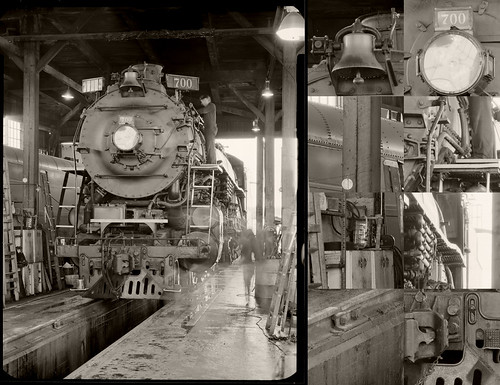Even as we are opening up over here after 18+ months of a pandemic I find I still have a bit of time on my hands.
I also have a medium sized box filled with black and white film negatives that I brought back with me the last time we were State-side. What better thing to do than to see if my work has at all progressed over the decades?
To find out what I wanted to find out I needed to make digital "scans" of a few negatives. I was concerned that 24mpixels would be "enough" resolution to make a "one shot" copying effort worthwhile. It's all I have on hand at the moment as the higher megapixel cameras are well out of my financial reach.
My fear was that I might need to photograph each negative in sections, then stitch them together into a larger file to get the kind of "resolution" I felt large black and white negatives were capable of.
Here is the "copy stand" setup I used -
- Sony A7 24mpixel full-frame camera - ISO50 + 2sec delay shutter release
- Nikon Micro-Nikkor f/3.5 pre-Ai shot at f/8
- Lens adapter
- Mamiya RB67 compendium lens shade - to eliminate reflections coming from behind the camera
- 77mm to 52mm filter thread adapter - to mount the Mamiya lens shade
- Big Beefy Bogen tripod
- White translucent "scrim" - to provide soft/even light behind a negative
- Negatives taped to glass - with the scrim behind the neg as per above
- In-camera "level" function to square things up

The first train image is of SP4449, a 1941 Lima manufactured streamlined 4-8-4 Northern class steam locomotive. She was the locomotive that pulled the "Freedom Train" around the USA in 1976.
The film is Polaroid Type55 Positive/Negative. I wish someone could reliably reproduce this film. If they could I'd be sorely tempted to buy another 4x5 camera and a lens or two. This was wonderful material to work with.
As you no doubt are already aware, this film gave a print and a negative at the same time. I loved working with this material. To get decent density in the negative I usually shot it at ISO32 or ISO25. This would leave the print slightly over-exposed, but this didn't matter to me as what I was really after was the neg.
I lived for 18 years in Hillsboro, Oregon. Occasionally the city of Portland's big steam locomotives could be heard on the tracks that ran to the south of the house. Often I'd grab a camera and jump into the car to head over to see what I could see.
Coming to the subject of deciding if 24mpixel is enough "resolution" to capture something decent off an old 4x5inch negative in a single shot, here is a photo of SP4449 at rest during one of its Hillsboro runs.

SP4449 ~ Hillsboro
Schneider 110mm XL f/5.6
Full Scene on top
100percent crop sections across the bottom
To my eyes things don't look too bad. In fact, this looks entirely usable. Just to confirm this I would like to look at a second image.
The city of Portland owns another steam locomotive. SPS700 is an "E1" 4-8-4 Northern class steam locomotive that was built by Baldwin Locomotive Works in 1938. She is physically larger than her SP4449 sister.
After I started chasing these around Hillsboro I made a concerted effort to find the roundhouse that I heard they lived in. It wasn't exactly easy and one had to be careful about visiting. At that time the roundhouse was on heavily rail-trafficed BNSF property and the steam locomotive crews were only on site at the roundhouse on certain days of the week.
Once I sorted all this out, I found the roundhouse to be a magical place. There were actually three steam locomotives housed there, along with several early diesel electric locomotives, passenger cars, with various parts and pieces laying all around.

SPS700 ~ Roundhouse
Schneider 110mm XL f/5.6
Full Scene on the left
100percent crop sections down the right
I have to say that, yes, this "works." And, yes, those are backlit/sidelit raindrops you see hanging off the bell. The resolution is, again to my eyes, outstanding. The dynamic range of that old Polaroid film is truly outstanding, too.
What I have on hand is a small fraction of the film I had up until a few years ago when I whittled everything down to just what I could carry back to Europe with me. I tried to keep the most interesting images. A lot has been left behind in a landfill somewhere. Fortunately I still retain a satisfying number of negatives.
A larger project, or series of projects, now appears on the horizon. I'm really enjoying working with these old train photos.
No comments:
Post a Comment